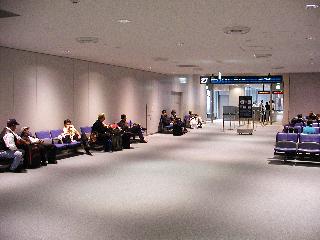
Waiting in Tokyo
The trip to Beijing won't be empty, and I'm not the only westerner going there. Despite the SARS scare, not everybody is staying away.425=Marco Polo Hotel, Beijing=A yellow sun rose in a saffron sky this morning. Looking out over from the sixth floor of the Marco Polo Hotel, I get my first glimpse of Beijing.
The city is preparing for the upcoming Olympics with great zeal, and outside my window is just one bit of evidence: an entire block reduced to an empty lot, and a skyline filled with cranes.
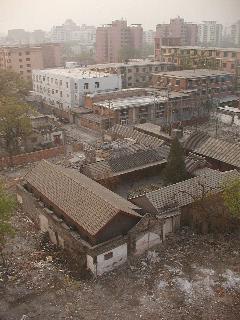
p4244318.jpg
Actually, not the entire block. One building remains standing, surrounded by the remains of buildings that once stood beside it.
Elsewhere throughout the city, some older buildings are painted with the sign of death, meaning that they're scheduled for imminent demolition. But the tear-down is not universal; there are districts in which many of the older buildings are being kept.
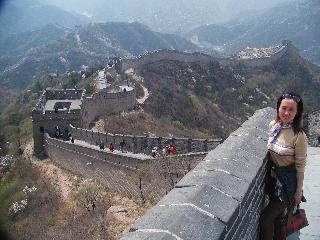
Steep Climb
We started the ascent at a point that isn't visible (below the ridge at right) and we're almost, but not quite, to the highest peak. Oh, and meet Jingjing, the local guide for Beijing. She's a veritable fountain of information about the city and surrounding area, and an astute hostess (especially considering the SARS situation in Beijing!)
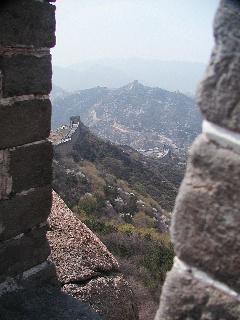
Over the Rampart
Down there is -- or used to be -- foreign land. Standing here on the BaDaLing portion of the Great Wall, just north of Beijing, sentries used to watch the northern frontier. Now, of course, both sides are deep within China's boundaries.
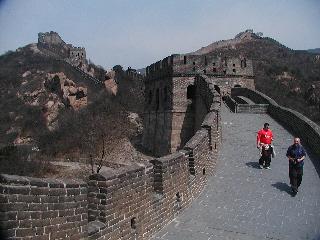
Empty Walls
Looking eastward, we see several fortified towers; these used to serve as barracks for soldiers stationed on the wall, as well as communication centers. Messages used to be passed along the line toward Beijing via smoke, pennant, or fire signals. While soldiers still stand on the wall, they're far more welcoming of the invading hoards now (although currently there just aren't that many of us foreigners...)
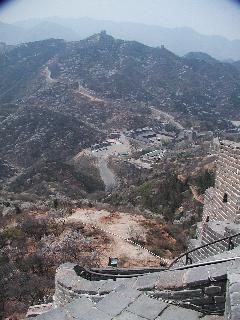
On the "Chinese" Side
Looking westward, the left side of this picture is what used to be old China; the right, the Mongolian frontier. Late April finds the countryside abloom with blossoms, and concerns over SARS causes the walls to be quite devoid of tourists.
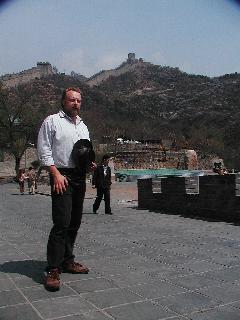
p4244339.jpg
Jingjing, the tour guide insisted that I spend some time in front of the camera, instead of just behind it. So I guess this ends up being proof that I was actually there ;-) I actually wanted a lawn gnome to take my place, but there weren't any to be found.
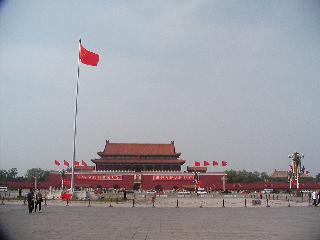
South Gate of Forbidden City
The Tiananmen Square, known to most Americans only for the events of the late eighties, is not unlike the mall in Washington DC: the great public space symbolizing the convergence of people and government. Once the "front yard" to the Forbidden City, it used to be enclosed and accessible only to military and civil officials. Those buildings and walls are now gone, and the plaza is the largest city center.

Maoist Monuments
In the foreground, just behind the row of banners, is a monument commemorating the heroes of China, with praises in the Chairman's own hand depicted along its face. Behind it is the mausoleum in which the body of the former leader rests in a crystal coffin.